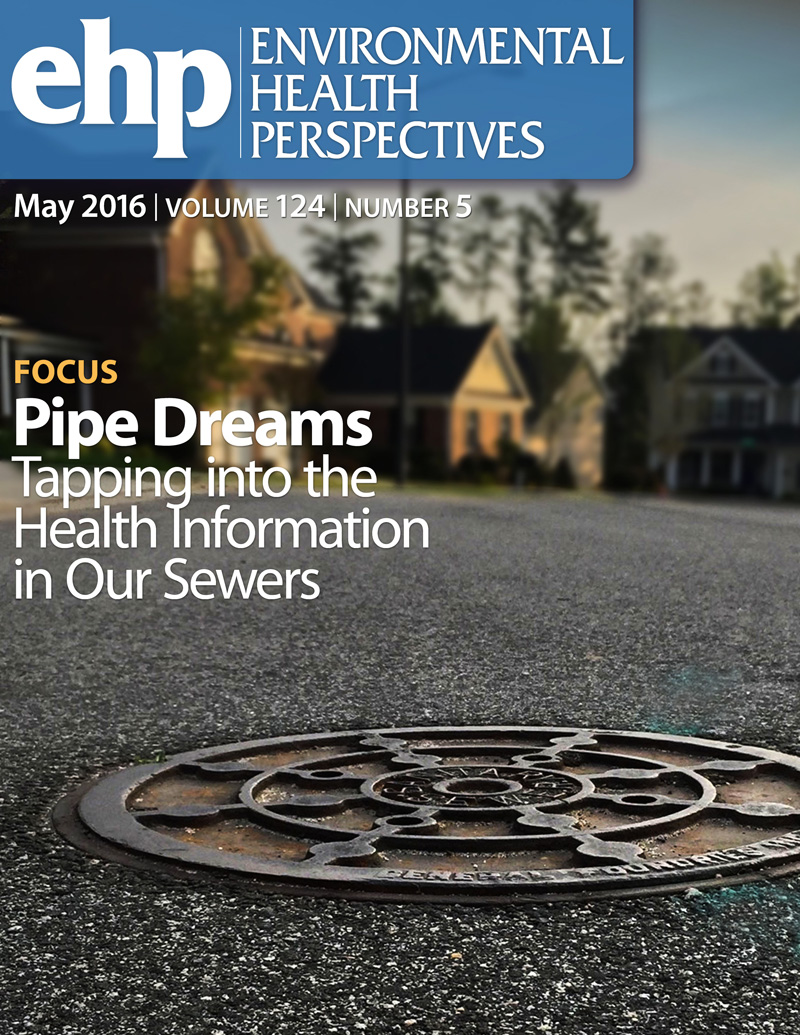Perinatal Exposures to Ambient Fine Particulate Matter and Outdoor Artificial Light at Night and Risk of Pediatric Papillary Thyroid Cancer.
IF 10.1
1区 环境科学与生态学
Q1 ENVIRONMENTAL SCIENCES
引用次数: 0
Abstract
BACKGROUND Pediatric thyroid cancer incidence has been increasing globally, with environmental exposures being a hypothesized risk factor. OBJECTIVE We evaluated the association between pediatric thyroid cancer risk and perinatal exposure to ambient fine particulate matter (PM2.5) and outdoor artificial light at night (O-ALAN). Both are considered environmental carcinogens with evidence of thyroid function disruption, reported associations with thyroid cancer in adults, and concerns of distributive inequity. O-ALAN may also serve as a proxy for other outdoor air pollutants or urbanization. METHODS We conducted a case-control study of papillary thyroid cancer nested within a California birth cohort that included 736 cases diagnosed at 0-19 years and born in 1982-2011 and 36,800 controls frequency-matched on birth year. We assigned individual-level exposures for residence at birth for ambient PM2.5 concentrations from a validated, ensemble-based prediction model and O-ALAN using the New World Atlas of Artificial Night Sky Brightness. We calculated odds ratios (OR) and 95% confidence intervals (CI) using logistic regression adjusting for potential confounders and stratified by age and race/ethnicity. RESULTS We observed statistically significant associations between PM2.5 exposure and papillary thyroid cancer risk overall (OR per 10-µg/m3 increase in PM2.5=1.07, 95%CI: 1.01-1.14), among the 15-19 year age group (OR=1.08; 95%CI: 1.00-1.16), and among Hispanic children (OR=1.13; 95%CI: 1.02-1.24). For O-ALAN, we observed statistically significantly increased odds of papillary thyroid cancer in higher exposure tertiles compared to the reference tertile in the overall population (tertile 2: OR=1.25, 95%CI 1.04-1.50; tertile 3: OR=1.23, 95%CI: 1.02-1.50) and when modeled as a continuous variable (OR 1.07 per 1 mcd/m2). In age-stratified analyses, significant associations were observed among the 15-19-year-old age group, but not the 0-14-year-old group. No significant differences were found by race/ethnicity. DISCUSSION This study provides new evidence suggesting associations between early-life exposure to PM2.5 and O-ALAN and pediatric papillary thyroid cancer. Given that O-ALAN may also represent other air pollutants or broader urbanization patterns, further research and refinements to exposure metrics are needed to disentangle these factors. https://doi.org/10.1289/EHP14849.围产期夜间暴露于环境细颗粒物和室外人造光与儿童甲状腺乳头状癌的风险
背景:儿童甲状腺癌的发病率在全球范围内呈上升趋势,环境暴露是一个假设的危险因素。目的探讨围产期环境细颗粒物(PM2.5)和夜间室外人造光(O-ALAN)暴露与儿童甲状腺癌风险的关系。两者都被认为是环境致癌物,有证据表明甲状腺功能紊乱,与成人甲状腺癌有关联,并存在分配不公平的担忧。O-ALAN也可以作为其他室外空气污染物或城市化的代表。方法:我们对加利福尼亚出生队列进行了一项病例对照研究,其中包括736例在0-19岁诊断并出生于1982-2011年的病例和36,800例与出生年份频率匹配的对照。我们使用新世界人工夜空亮度地图集,通过一个经过验证的、基于集合的预测模型和O-ALAN,分配了出生时居住环境PM2.5浓度的个人暴露水平。我们使用逻辑回归计算优势比(OR)和95%置信区间(CI),对潜在的混杂因素进行调整,并按年龄和种族/民族分层。结果在15-19岁年龄组中,PM2.5暴露与甲状腺乳头状癌总体风险之间存在统计学显著相关性(OR= 1.07, 95%CI: 1.01-1.14) (OR=1.08;95%CI: 1.00-1.16),西班牙裔儿童(OR=1.13;95%置信区间:1.02—-1.24)。对于O-ALAN,我们观察到在总体人群中,与参考样本相比,高暴露样本中甲状腺乳头状癌的发生率显著增加(样本2:OR=1.25, 95%CI 1.04-1.50;tertile 3: OR=1.23, 95%CI: 1.02-1.50),当建模为连续变量时(OR为1.07 / 1 mcd/m2)。在年龄分层分析中,在15-19岁年龄组中观察到显著关联,但在0-14岁年龄组中没有。没有发现种族/民族之间的显著差异。本研究提供了新的证据,表明生命早期暴露于PM2.5和O-ALAN与儿童甲状腺乳头状癌之间存在关联。考虑到O-ALAN也可能代表其他空气污染物或更广泛的城市化模式,需要进一步研究和改进暴露度量来解开这些因素。https://doi.org/10.1289/EHP14849。
本文章由计算机程序翻译,如有差异,请以英文原文为准。
求助全文
约1分钟内获得全文
求助全文
来源期刊

Environmental Health Perspectives
环境科学-公共卫生、环境卫生与职业卫生
CiteScore
14.40
自引率
2.90%
发文量
388
审稿时长
6 months
期刊介绍:
Environmental Health Perspectives (EHP) is a monthly peer-reviewed journal supported by the National Institute of Environmental Health Sciences, part of the National Institutes of Health under the U.S. Department of Health and Human Services. Its mission is to facilitate discussions on the connections between the environment and human health by publishing top-notch research and news. EHP ranks third in Public, Environmental, and Occupational Health, fourth in Toxicology, and fifth in Environmental Sciences.
 求助内容:
求助内容: 应助结果提醒方式:
应助结果提醒方式:


